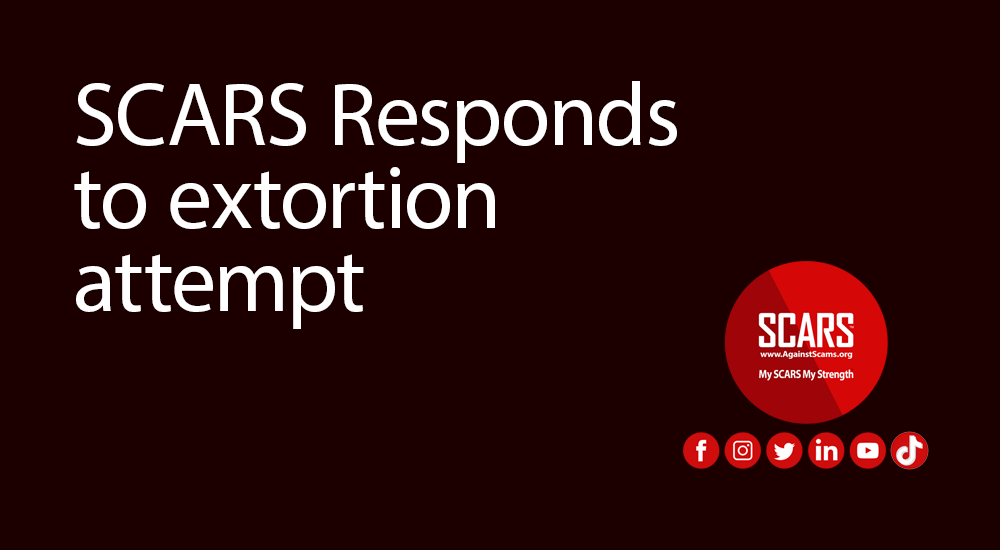SCARS™ Special Report: Rubberband Bank Wire Transfer Scams [Infographic]
YOU CAN LOSE MONEY BY SENDING WIRE TRANSFER OR BY RECEIVING THEM
[lwptoc]Incidental Of The Main Scam, Scammers Will Engage In Sub-Scams To Make Extra Money Or To Get Money When They Can’t Get It Any Other Way
There are hundreds of different scam variations from romance scams to money scams to business scams, but each will involve stealing money from a real person or business.
However, sometimes a victim cannot pay what the scammer wants, so they try a different tactic, such as the Rubberband Bank Wire Transfer Scam.
Rubberband Bank Wire Transfer Scam
For whatever reason, the scammer stops trying to get your money, but they say they are due money from someone somewhere. They then have the great idea that maybe it would be easier if the money was set to you, and then as soon as the back credits it into your account you just sent all or most of it to them.
Most people would not object to that because they think that there is no risk. The person will send the money and then when it is in the account you send it on. Only when it is in your account and there is no risk you do a wire transfer to the new person. Seems safe right?
This Is Because Most People Do Not Know How Bank Accounts Actually Work
The very nature of this action by a scammer is an attempt to turn a victim into a Money Mule engaged in money laundering.
To learn the full details of how bank accounts function visit our article: SCARS™ Guide: Money Mule Series – Legal Responsibility »
In essence, the bank advances the money (like a loan) when a deposit is made. But in this case, it is an incoming wire transfer – real money that the bank receives.
Except that is not totally true. When a bank receives a wire transfer, it is still like a kind of a check – it is a promise to pay – a lot like a check! With similar dangers.
According to Wikipedia:
Wire transfer, bank transfer or credit transfer, is a method of electronic funds transfer from one person or entity to another. A wire transfer can be made from one bank account to another bank account.
Different wire transfer systems and operators provide a variety of options relative to the immediacy and finality of settlement and the cost, value, and volume of transactions.
- Central bank wire transfer systems, such as the United States Federal Reserve’s FedWire system in the United States, are more likely to be real-time gross settlement (RTGS) systems. Domestic U.S. wire transfers go through the Federal Reserve system. International wires go typically through the SWIFT system (see below).
- RTGS systems provide the quickest availability of funds because they provide immediate “real-time” and final “irrevocable” settlement by posting the gross (complete) entry against electronic accounts of the wire transfer system operator.
- Other systems such as Clearing House Interbank Payments System (CHIPS) provide net settlement on a periodic basis.
- More immediate settlement systems tend to process higher monetary value time-critical transactions, have higher transaction costs, and have a smaller volume of payments.
- A faster settlement process allows less time for currency fluctuations while money is in transit.
BUT THERE IS A PROBLEM
It is possible for the system to sometimes pull back the transfer if it is an illegal or fraudulent transaction, such as someone accessing an account without authorization.
A Bank Wire Transfer Is Effected As Follows:
- The entity wishing to do a transfer approaches a bank and gives the bank the order to transfer a certain amount of money. IBAN and BIC (account & routing or SWIFT CODE) codes are given as well so the bank knows where the money needs to be sent.
- The sending bank transmits a message, via a secure system (such as SWIFT or Fedwire), to the receiving bank, requesting that it effect payment according to the instructions given.
- The message also includes settlement instructions. The actual transfer is not instantaneous: funds may take several hours or even days to move from the sender’s account to the receiver’s account.
- Either the banks involved must hold a reciprocal account with each other, or the payment must be sent to a bank with such an account, a correspondent bank, for further benefit to the ultimate recipient.
- Banks collect payment for the service from the sender as well as from the recipient. The sending bank typically collects a fee separate from the funds being transferred, while the receiving bank and intermediary banks through which the transfer travels deduct fees from the money being transferred so that the recipient receives less than what the sender sent.
Security Of The Bank Wire System
With bank-to-bank wire transfers, each account holder must have a proven identity. Chargebacks (being able to recall the money after the wire is complete) are unlikely, although wires can be recalled as long as the sending bank agrees and presents a valid reason such as fraud or valid unauthorized transfer.
Wire transfers done through cash offices are essentially anonymous (such as Western Union – but the customer is never actually told this) and are designed for transfer between persons who trust each other. It is unsafe to send money by wire to an unknown person to collect at a cash office; the receiver of the money (many times does not have to prove their identity at all) may also, after collecting it, not provide whatever goods or services they promised in return for the payment, but instead simply disappear. This scam has been used often, especially in the romance scams or 419 scams which often use Western Union or MoneyGram for transfer and collection.
International transfers involving the United States are subject to monitoring by the Office of Foreign Assets Control (OFAC), which monitors information provided in the text of the wire and then decides whether, according to the US Government’s federal regulations and political positions, money is being transferred to terrorist groups or countries or entities under sanction by the United States government. If a financial institution suspects that funds are being sent from or to one of these entities, it must block the transfer and freeze the funds. Unfortunately, this process is not designed to protect consumers, only to enforce U.S. sanctions.
SWIFT or IBAN wire transfers are not completely free of vulnerabilities. Every intermediary bank that handles a wire transaction can take a fee directly out of the “wire payload” (the assets being transferred) without the account holder’s knowledge or consent. In many places, there is no legislation or technical means to protect customers from this practice. If bank “S” is the sending bank (or “brokerage”), and bank “R” is the receiving bank (or “brokerage”), and banks “I1”, “I2” and “I3” are intermediary banks, the client may only have a contract with the sending bank or receiving bank, but banks I1, I2 and I3 can (and often do) take money from the wire without any direct arrangement with the client. Clients are sometimes taken by surprise when less money arrives at bank R. Contrast this with checks, where the amount transferred is guaranteed in full, and fees (if there are any) can be charged only at endpoint banks.
The European Union offers some partial protection from this practice by prohibiting European intermediary banks from taking a fee out of the amount being transferred, even for transatlantic transfers. However, it’s still common practice for a European brokerage firm to state that they charge no transfer fee, and then contact their bank to take an unpublished fee from the amount transferred as a means to compensate their bank with their clients’ assets. This means that by the time the transfer is received it can be significantly less than the money that was sent.
Revocation Or Bouncing
Most people have no idea how complex bank accounts and the money transfer systems actually are. They have no idea that an amount that shows in a bank account may not really be there or is not permanent.
It means the money is not permanent and is subject to being revoked at ANY TIME after the transfer has been made and the money removed – in some places up to a year after the transfer!
![SCARS™ Special Report: Rubberband Bank Wire Transfer Scams [Infographic] bank wire transfer scams infographic Bank Wire Transfer Scams We All Think Of Wire Transfers As Being Completely Safe! But The Truth Is That They Are Far From Safe & Secure!](https://romancescamsnow.com/wp-content/uploads/2019/10/bank-wire-transfer-scams-infographic-900x600.png)
Bank Wire Transfer Scams
We All Think Of Wire Transfers As Being Completely Safe!
But The Truth Is That They Are Far From Safe & Secure!
This Is The Core Of The Rubberband Wire Scam
So many scam victims give their scammers access to their bank information or get the victim to actually make a wire transfer. In more and more cases now, the scammers are doing the wire transfer to a third-party (a MULE). Some of the MULES know the wire is coming, and some do not know it is coming – it just magically appears in their account.
Most people look in their account and they see available funds and think that it is real money – either from a check deposited or from a wire transfer – but we have seen that it is not! »
They see money in the account and perform the instructions of the scammers thinking that there is no risk. The money was sent and they are just forwarding it – it has to be real.
They fail to realize that the original “real” owner of the sending account can pull it back in specific cases, such as unauthorized transfers. An unauthorized transfer is one that was done without the actual sender’s consent (sadly this is not available to most scam victims that send the money themselves). If a scammer accesses an account (even if the victim gave the scammer the account info) the wire transfer can many times be recalled – it depends on the sending bank’s policies and willingness to perform the recall.
The result is a wire transfer that was made can be recalled and the victim is left with a giant hole – negative balance in their account!
The Knee Jerk
In many cases, the person who has an unknown wire just show up in their account acts impulsively and asks their bank to do a NEW wire to send the money back.
An account holder can refuse a wire – by telling the bank to simply remove the money because it was not with their authorization. But only some bank account holders will follow this correct process. Instead, they WIRE it back creating a second transaction.
When the person does the second wire it will be taking real money out of their account. Then if the original wire is recalled, the money they sent in the second transaction is THEIR responsibility since it will have never really been there!
This is the key to the scam – fake money in their account that looks like real funds in an account. The victim wires it back or to a third account. Then the original wire is recalled for fraud, leaving the victim holding the negative account and owing to the money back to their bank.
Very Common In Business Scams
This is very common in B2B Scams. Such as the case of the “Collection Agent Scam” where a business is contacted in another country to help a business collect money that is owed. The target business is promised a commission on money collected (meaning they can keep part of it). Small sales and marketing companies are very easy targets for this type of scam.
Other Variations
There are many other variations of scams that use this fundamental process to scam victims – either individuals or businesses.
Major Problems
Since the account holder is left owing to their bank they will be financially responsible for the bank’s full losses.
In addition, there may be questions at the local, state or federal level about participation in money laundering. Since scammers are many times actual terrorists, there can be issues about participation in funding and supporting terrorist activities. Just hiring an attorney to defend the account holder can be costly. An attorney is strongly recommended in these situations to defend the account holder’s interests.
However, there can also be significant tax complications since such transactions like these may be taxable at the local, state, or federal level. A tax or financial professional should always be consulted in these matters.
Recovering Your Money
Most of the time, the money YOU SENT is not going to come back simply because the bank gets to decide if they will recall your wire. Most of the time they will take the position that you knowingly sent it to the scammer – meaning you authorized the transfer, regardless of who you though the scammer was. If you rely on your bank to save you – most of the time they will not.
The FBI will likewise do very little most of the time. This is sad because the have the authority to act for you, but also rarely do – a true black mark on their organization.
Our Suggested Solution
However, some time ago we started looking at a category of businesses that work independently to recover money for scam victims. There is a handful that seem real, so we investigated several and decided to form an alliance with just one that we found to be both reliable and ethical in their treatment of scam victims. We encourage you to contact www.MyChargeBack.com – a business that we have investigated and that has become a Corporate Member and Donor of SCARS. We suggest that you seek their assistance in getting YOUR wired money back. There are no guarantees but they offer a free consultation to explore what is possible. Please note: that they are a for-profit business and do charge a fee if they go forward to help you.
A lot has changed in 2018 and 2019, and now there may finally be options for victims to recover their money.
Summary
No financial transaction with a stranger is safe. The person receiving the money can be at risk months after the transactions. In fact, one of our own SCARS Board Members fell for this same scam.
If this sounds like you, you are strongly advised to report these crimes rapidly and contact an attorney to help you through the risks.
Just remember, your bank is NOT your friend and they are NOT there to help you. They are a business that offers services to their customers, but you are always responsible for what happens in your account – NOT THE BANK!
Your bank and the FBI will (most of the time) not really help you.
Instead, you will likely need the help of third-parties: tax professional, accountant, lawyer, and money recovery firm »
We wish you the best of luck if you are in this situation.
PLEASE SHARE OUR ARTICLES WITH YOUR CONTACTS
HELP OTHERS STAY SAFE ONLINE
SCARS™ Team
A SCARS Division
Miami Florida U.S.A.
LEGAL DISCLAIMER: MYCHARGEBACK.COM IS AN INDEPENDENT COMPANY PROVIDING SERVICES TO SCAM VICTIMS TO RECOVER MONEY LOST. THE SOCIETY OF CITIZENS AGAINST RELATIONSHIP SCAMS INC., ITS BOARD, OFFICERS, PRINCIPALS, SHAREHOLDERS, OR VOLUNTEERS, CANNOT GUARANTEE ANY SPECIFIC RESULT OR COSTS. YOU MUST EVALUATE ANY OFFERS MADE BY ANY THIRD-PARTY AND MAKE YOUR OWN INDEPENDENT DECISION.
SCARS CORPORATE MEMBERSHIP: PLEASE NOTE THAT CORPORATE MEMBERSHIP IS ON AN ANNUAL BASIS AND COMPANIES DEPICTED MAY NOT BE A CORPORATE MEMBER AT THE TIME OF YOUR READING THIS INFORMATION. IT IS ALWAYS BEST TO CONFIRM STATUS BY CONTACTING SCARS AT CONTACT@AGAINSTSCAMS.ORG
SCARS Alliance Against Scams™ is a trademark of the Society of Citizens Against Relationship Scams.
TAGS: SCARS, Important Article, Information About Scams, Anti-Scam, SCARS Special Report About Scams, Rubberband Bank Wire Transfer Scams, Bank Wire Transfer Fraud, Bank Wire Transfer Scam, Fraudulent Bank Wire Transfers, How Wire Transfers Work, MyChargeBack.com, Chargebacks, Money Recovery, Recovering Your Money, SCARS Alliance Against Scams, SCARS Corporate Member,
The Latest SCARS|RSN Posts
FIND MORE SCAM NEWS
«SCAMCRIME.COM»
CHAT WITH SCARS™
«CLICK HERE»
END
MORE INFORMATION
– – –
Tell us about your experiences with Romance Scammers in our
« Scams Discussion Forum on Facebook »
– – –
FAQ: How Do You Properly Report Scammers?
It is essential that law enforcement knows about scams & scammers, even though there is nothing (in most cases) that they can do.
Always report scams involving money lost or where you received money to:
- Local Police – ask them to take an “informational” police report – say you need it for your insurance
- U.S. State Police (if you live in the U.S.) – they will take the matter more seriously and provide you with more help than local police
- Your National Police or FBI « www.IC3.gov »
- The SCARS|CDN™ Cybercriminal Data Network – Worldwide Reporting Network « HERE » or on « www.Anyscam.com »
This helps your government understand the problem, and allows law enforcement to add scammers on watch lists worldwide.
– – –
Visit our NEW Main SCARS Facebook page for much more information about scams and online crime: « www.facebook.com/SCARS.News.And.Information »
To learn more about SCARS visit « www.AgainstScams.org »
Please be sure to report all scammers
« HERE » or on « www.Anyscam.com »
Legal Notices:
All original content is Copyright © 1991 – 2020 SCARS All Rights Reserved Worldwide & Webwide. Third-party copyrights acknowledge.
SCARS, RSN, Romance Scams Now, SCARS|WORLDWIDE, SCARS|GLOBAL, SCARS, Society of Citizens Against Relationship Scams, Society of Citizens Against Romance Scams, SCARS|ANYSCAM, Project Anyscam, Anyscam, SCARS|GOFCH, GOFCH, SCARS|CHINA, SCARS|CDN, SCARS|UK, SCARS Cybercriminal Data Network, Cobalt Alert, Scam Victims Support Group, are all trademarks of Society of Citizens Against Relationship Scams Incorporated.
Contact the law firm for the Society of Citizens Against Relationship Scams Incorporated by email at legal@AgainstScams.org
-/ 30 /-
What do you think about this?
Please share your thoughts in a comment below!
Article Rating
Table of Contents
- YOU CAN LOSE MONEY BY SENDING WIRE TRANSFER OR BY RECEIVING THEM
- Incidental Of The Main Scam, Scammers Will Engage In Sub-Scams To Make Extra Money Or To Get Money When They Can’t Get It Any Other Way
- Rubberband Bank Wire Transfer Scam
- This Is Because Most People Do Not Know How Bank Accounts Actually Work
- According to Wikipedia:
- BUT THERE IS A PROBLEM
- A Bank Wire Transfer Is Effected As Follows:
- Security Of The Bank Wire System
- Revocation Or Bouncing
- This Is The Core Of The Rubberband Wire Scam
- The Knee Jerk
- Very Common In Business Scams
- Other Variations
- Major Problems
- Recovering Your Money
- Our Suggested Solution
- Summary
- The Latest SCARS|RSN Posts
- United States Scam Center Strike Force – 2025 – VIDEO
- The Scam States of Southeast Asia – 2025-2026
- Yangyang Sweet / 阳阳 Sweet – Impersonation Victim – Used By Scammers – 2025
- Elicitation – A Scammer’s Manipulation Technique – 2025
- SCARS Institute’s New Survivor Community – www.SCARScommunity.org – 2025
- WARNING: AI-Enabled Browsers Pose a Cybersecurity Risk – 2025
RATE THIS ARTICLE?
LEAVE A COMMENT?
Recent Comments
On Other Articles
- Nikolaus on Dating Scammers Paradise: Ivory Coast: “The Ivory Coast romance scam is still going on. It seems that local authorities don’t handle the issue effectively!” Dec 10, 02:17
- on The SCARS Institute Top 50 Celebrity Impersonation Scams – 2025: “Thank you – we will.” Dec 7, 11:41
- on The SCARS Institute Top 50 Celebrity Impersonation Scams – 2025: “You should add Sean Bean to your list of Celebrities. This one is very good, and persistent. He will be…” Dec 2, 12:07
- on How You Think & Talk About Your Scam Affects Your Recovery: “I have hung on to the scams for far too long. With the intervention of an all-merciful God, I have…” Nov 6, 22:13
- on Disengaging From A Fake Scam Relationship: “Taci, you may want to join our new support community at www.SCARScommunity.org” Nov 6, 03:01
- on Disengaging From A Fake Scam Relationship: “This particular article helped me discover the many things I did wrong the first time I was scammed. I should…” Nov 5, 22:49
- on About the SCARS RomanceScamsNOW.com Website – 24 Years Published: “It was unavailable for a few days, but it is available again. If he would be interested, he is welcome…” Nov 5, 00:59
- on About the SCARS RomanceScamsNOW.com Website – 24 Years Published: “My husband has been scammed and your classes have been helping him but now he can’t seem to access them.…” Oct 26, 14:57
- on Talia Shepard – Impersonation Victim – Stolen Photos – 2024: “Hi, I’m Patrick from Belgium and I found this site by chance, so I just got to know it, and…” Oct 17, 23:46
- on Talia Shepard – Impersonation Victim – Stolen Photos – 2024: “Hallo ik ben Patrick uit Belgie en het is in verband over PayPal. Ik heb het dit jaar spijtig genoeg…” Oct 17, 23:08
ARTICLE META
Important Information for New Scam Victims
- Please visit www.ScamVictimsSupport.org – a SCARS Website for New Scam Victims & Sextortion Victims
- Enroll in FREE SCARS Scam Survivor’s School now at www.SCARSeducation.org
- Please visit www.ScamPsychology.org – to more fully understand the psychological concepts involved in scams and scam victim recovery
If you are looking for local trauma counselors please visit counseling.AgainstScams.org or join SCARS for our counseling/therapy benefit: membership.AgainstScams.org
If you need to speak with someone now, you can dial 988 or find phone numbers for crisis hotlines all around the world here: www.opencounseling.com/suicide-hotlines
A Note About Labeling!
We often use the term ‘scam victim’ in our articles, but this is a convenience to help those searching for information in search engines like Google. It is just a convenience and has no deeper meaning. If you have come through such an experience, YOU are a Survivor! It was not your fault. You are not alone! Axios!
A Question of Trust
At the SCARS Institute, we invite you to do your own research on the topics we speak about and publish, Our team investigates the subject being discussed, especially when it comes to understanding the scam victims-survivors experience. You can do Google searches but in many cases, you will have to wade through scientific papers and studies. However, remember that biases and perspectives matter and influence the outcome. Regardless, we encourage you to explore these topics as thoroughly as you can for your own awareness.
Statement About Victim Blaming
Some of our articles discuss various aspects of victims. This is both about better understanding victims (the science of victimology) and their behaviors and psychology. This helps us to educate victims/survivors about why these crimes happened and to not blame themselves, better develop recovery programs, and to help victims avoid scams in the future. At times this may sound like blaming the victim, but it does not blame scam victims, we are simply explaining the hows and whys of the experience victims have.
These articles, about the Psychology of Scams or Victim Psychology – meaning that all humans have psychological or cognitive characteristics in common that can either be exploited or work against us – help us all to understand the unique challenges victims face before, during, and after scams, fraud, or cybercrimes. These sometimes talk about some of the vulnerabilities the scammers exploit. Victims rarely have control of them or are even aware of them, until something like a scam happens and then they can learn how their mind works and how to overcome these mechanisms.
Articles like these help victims and others understand these processes and how to help prevent them from being exploited again or to help them recover more easily by understanding their post-scam behaviors. Learn more about the Psychology of Scams at www.ScamPsychology.org
Psychology Disclaimer:
All articles about psychology and the human brain on this website are for information & education only
The information provided in this article is intended for educational and self-help purposes only and should not be construed as a substitute for professional therapy or counseling.
While any self-help techniques outlined herein may be beneficial for scam victims seeking to recover from their experience and move towards recovery, it is important to consult with a qualified mental health professional before initiating any course of action. Each individual’s experience and needs are unique, and what works for one person may not be suitable for another.
Additionally, any approach may not be appropriate for individuals with certain pre-existing mental health conditions or trauma histories. It is advisable to seek guidance from a licensed therapist or counselor who can provide personalized support, guidance, and treatment tailored to your specific needs.
If you are experiencing significant distress or emotional difficulties related to a scam or other traumatic event, please consult your doctor or mental health provider for appropriate care and support.
Also read our SCARS Institute Statement about Professional Care for Scam Victims – click here to go to our ScamsNOW.com website.


![SCARS™ Special Report: Rubberband Bank Wire Transfer Scams [Infographic] properly reporting scams the process SCARS™ Special Report: Rubberband Bank Wire Transfer Scams [Infographic] properly reporting scams the process](https://romancescamsnow.com/wp-content/uploads/2019/10/properly-reporting-scams-the-process.png)
![SCARS™ Special Report: Rubberband Bank Wire Transfer Scams [Infographic] FACES OF EVIL REAL ROMANCE SCAMMERS FACES-OF-EVIL-REAL-ROMANCE-SCAMMERS](https://romancescamsnow.com/wp-content/uploads/2018/10/FACES-OF-EVIL-REAL-ROMANCE-SCAMMERS.png)
![SCARS™ Special Report: Rubberband Bank Wire Transfer Scams [Infographic] rubberband bank wire trasnfer scams SCARS™ Special Report: Rubberband Bank Wire Transfer Scams [Infographic] rubberband bank wire trasnfer scams](https://romancescamsnow.com/wp-content/uploads/2019/10/rubberband-bank-wire-trasnfer-scams.png)
![SCARS™ Special Report: Rubberband Bank Wire Transfer Scams [Infographic] portal banner SCARS Institute Scam Survivor's Community portal banner](https://romancescamsnow.com/wp-content/uploads/2025/11/portal-banner.png)









![SCARS™ Special Report: Rubberband Bank Wire Transfer Scams [Infographic] more information banner More Information From RomanceScamsNow.com](https://romancescamsnow.com/wp-content/uploads/2012/11/more-information-banner.png)
![SCARS™ Special Report: Rubberband Bank Wire Transfer Scams [Infographic] REPORT BLOCK RECOVER2 SCARS™ Special Report: Rubberband Bank Wire Transfer Scams [Infographic] REPORT BLOCK RECOVER2](https://www.romancescamsnow.com/wp-content/uploads/2018/07/REPORT-BLOCK-RECOVER2.png)






![SCARS™ Special Report: Rubberband Bank Wire Transfer Scams [Infographic] SCARS CDN REPORT SCAMEMRS HERE e1697414569935 SCARS-CDN-REPORT-SCAMEMRS-HERE](https://romancescamsnow.com/wp-content/uploads/2018/12/SCARS-CDN-REPORT-SCAMEMRS-HERE-e1697414569935.png?_t=1697414571)
![SCARS™ Special Report: Rubberband Bank Wire Transfer Scams [Infographic] NavyLogo@4x 81 U.S. & Canada Suicide Lifeline 988](https://romancescamsnow.com/wp-content/uploads/2023/06/NavyLogo@4x-81.png)

![SCARS™ Special Report: Rubberband Bank Wire Transfer Scams [Infographic] niprc1.png1 150x1501 11 SCARS™ Special Report: Rubberband Bank Wire Transfer Scams [Infographic] niprc1.png1 150x1501 11](https://scamsnow.com/wp-content/uploads/2025/04/niprc1.png1_-150x1501-11.webp)
Thank you for your comment. You may receive an email to follow up. We never share your data with marketers.